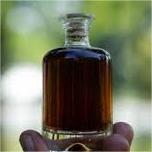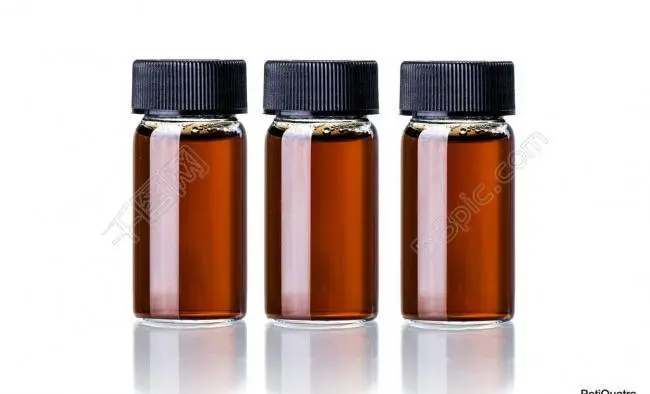**The Magic Molecule: What Exactly Is Surfactant P20?**
(What Is Surfactant P20)
Ever mixed oil and water? They stubbornly refuse to blend. Now imagine a tiny peacekeeper stepping in, making them cooperate. That’s essentially what surfactants do, and Surfactant P20 is one of the most fascinating examples. This unassuming chemical is a powerhouse behind the scenes in labs and factories worldwide. Let’s pull back the curtain on this unsung hero.
**1. What is Surfactant P20?**
Surfactant P20 is a specific type of non-ionic surfactant. “Surfactant” is short for “surface-active agent.” Its job is all about surfaces and interfaces – the meeting points between different things, like oil and water or air and liquid. Non-ionic means it carries no electrical charge. This neutrality is a big part of its charm. P20 belongs to a chemical family called alkylphenol ethoxylates. Think of it as a molecule with a long, water-hating (hydrophobic) tail and a water-loving (hydrophilic) head made of repeating ethylene oxide units. This split personality lets it bridge incompatible worlds. In simple terms, it’s a master mediator. It reduces surface tension, helps things mix (emulsify), keeps mixtures stable, and helps things get wetter faster. You’ll find it widely used in biochemistry labs, industrial cleaning, and even some personal care products. Its key traits include good solubility in water, stability across a range of pH levels, relatively low toxicity compared to some alternatives, and effectiveness at low concentrations.
**2. Why Use Surfactant P20?**
Surfactant P20 isn’t just another chemical. It offers specific advantages making it a top choice in many situations. Its non-ionic nature is crucial. Because it has no charge, it plays nicely with other charged molecules. This is vital in delicate biochemical experiments where charged interactions could ruin everything. It’s generally gentler than many ionic surfactants. This lower harshness is important for protecting sensitive biological materials like proteins or cells. P20 is incredibly versatile. It works well over a broad temperature range and performs consistently across different acidity and alkalinity levels (pH). This reliability is key for industrial processes and scientific reproducibility. It’s highly effective at very low concentrations. A little goes a long way, making it efficient and often cost-effective. Compared to some other surfactants, P20 is considered relatively biodegradable. This environmental aspect is increasingly important. Its ability to solubilize fats, oils, and greases without being overly aggressive makes it indispensable. Choosing P20 often means choosing reliability, gentleness, and broad compatibility.
**3. How Does Surfactant P20 Work?**
The magic of P20 happens at the molecular level. Remember its structure: a hydrophobic tail and a hydrophilic head. Picture it at the interface between oil and water. The hydrophobic tail dives happily into the oil droplet. The hydrophilic head stays firmly in the water. This positioning breaks down the barrier between the two liquids. It drastically reduces the surface tension of the water. Water molecules normally cling tightly together at the surface. P20 molecules insert themselves, weakening this grip. This makes water “wetter,” allowing it to spread more easily and penetrate surfaces. For mixing oil and water, P20 acts like a matchmaker. It surrounds tiny oil droplets. The hydrophobic tails point inward, grabbing the oil. The hydrophilic heads point outward, interacting with the water. This creates stable droplets suspended in the water – an emulsion. It prevents these droplets from clumping back together. P20 also helps suspend solid particles in liquids and aids in the wetting of surfaces. It’s like a molecular party planner, ensuring everything mixes smoothly and stays mingled. Its effectiveness hinges on this perfect balance between its water-loving and water-hating parts.
**4. Where is Surfactant P20 Used? (Applications)**
Surfactant P20’s unique properties make it a star player across diverse fields:
* **Biochemistry & Molecular Biology Labs:** This is a major home for P20. It’s a key ingredient in buffers for techniques like ELISA (Enzyme-Linked Immunosorbent Assay) and Western Blotting. Here, it prevents proteins from sticking nonspecifically to plastic plates or membranes. It keeps everything dissolved and moving freely, ensuring accurate test results. Think of it as the essential lubricant for seeing the tiny machinery of life clearly.
* **Industrial Cleaning:** P20 is a powerhouse in heavy-duty cleaners. Its ability to cut through grease, oil, and grime makes it perfect for degreasers, metal cleaners, and hard surface cleaners used in factories, garages, and workshops. It emulsifies the mess so it can be rinsed away easily.
* **Textile Processing:** The textile industry relies on surfactants at many stages. P20 is used in scouring (removing natural waxes and oils from fibers), dyeing (helping dyes penetrate evenly), and finishing (applying softeners or water repellents). It ensures processes run smoothly and fabrics look their best.
* **Agriculture:** In pesticide and herbicide formulations, P20 acts as a wetting agent and spreader. It helps the active chemicals coat plant leaves or insect bodies evenly, maximizing effectiveness and reducing the amount needed.
* **Personal Care (Limited & Specific):** While less common than in the past due to environmental concerns about its breakdown products, P20 can still be found in some industrial hand soaps, heavy-duty cleaners, or specific emulsified products where its stability is critical. Its use here is more specialized now.
* **Paints & Coatings:** P20 helps pigments disperse evenly in liquids and improves the wetting of surfaces before painting, leading to a smoother, more uniform finish.
**5. Surfactant P20: Your Questions Answered (FAQs)**
* **Is Surfactant P20 safe?** Safety depends on concentration and use. In diluted forms within lab buffers or formulated cleaners, handled correctly, it’s generally considered safe. Always consult the specific product’s Safety Data Sheet (SDS) for detailed handling, storage, and disposal instructions. Wear appropriate protective gear like gloves and goggles when handling concentrated forms.
* **What are the environmental concerns?** Historically, some alkylphenol ethoxylates like nonylphenol ethoxylates (NPEs – a close relative) raised concerns because their breakdown products (alkylphenols) can be persistent and potentially disrupt hormones in wildlife. Surfactant P20 is typically octylphenol ethoxylate. While generally considered less problematic than NPEs, responsible use and disposal are still crucial. Regulations vary globally.
* **Are there alternatives to Surfactant P20?** Yes. Alternatives exist, especially in personal care and where stricter environmental standards apply. These include other non-ionics like fatty alcohol ethoxylates, sugar-based surfactants (alkyl polyglucosides), or specific block copolymers designed for lab use (e.g., Tween 20 is a common alternative in some biochemical applications). The choice depends on the specific needs of the application.
* **How should I store Surfactant P20?** Store it in a cool, dry place, tightly sealed in its original container. Keep it away from strong oxidizing agents, strong acids, and strong bases. Follow the storage recommendations on the SDS.
* **Why is it called “P20”?** The “P” often stands for “phenol” (referring to the octylphenol part of the molecule). The “20” typically indicates the average number of ethylene oxide (EO) units attached to the phenol. So, P20 usually means octylphenol ethoxylated with approximately 20 moles of ethylene oxide. This number affects its solubility and properties.
(What Is Surfactant P20)
* **Can I use Surfactant P20 at home?** While it’s in some industrial cleaners, concentrated Surfactant P20 is not a typical household product. It requires careful handling. Stick to commercially formulated cleaners designed for home use.
Inquiry us
if you want to want to know more, please feel free to contact us.




